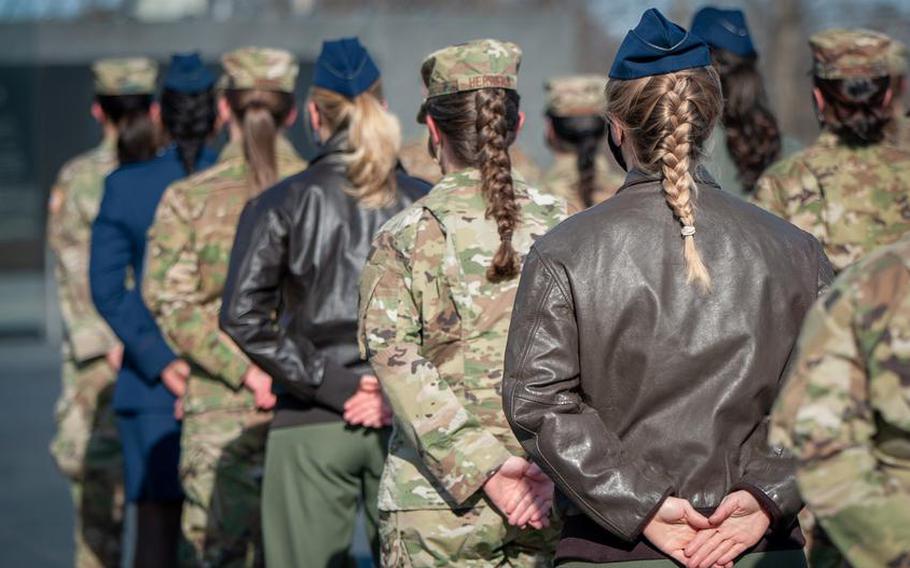
More female veterans are receiving disability pay from the Department of Veterans Affairs than ever before, with officials crediting targeted outreach to women, increased eligibility for toxic exposure and improved wait times on military sexual assault claims. (Jaimee Freeman/U.S. Air Force)
More female veterans are receiving disability pay from the Department of Veterans Affairs than ever before, with officials crediting targeted outreach to women, increased eligibility for toxic exposure and improved wait times on military sexual assault claims.
“These historic statistics are a direct result of our concerted efforts to bring women veterans to VA to encourage them to apply for the benefits they’ve earned and to build a VA that meets women veterans where they are, rather than asking them to come to us,” Joshua Jacobs, VA undersecretary for benefits, said Wednesday during a call with reporters.
More than 702,550 women receive disability for military service-connected injuries — up 26% from five years ago, according to VA. Roughly 89% of women filing a claim have it approved for at least one condition.
The average disability compensation rating for women is 68%, and they receive on average $26,800 a year, according to VA.
That’s slightly higher than their male peers who average at about 61% disability rating, Jacobs said.
However, only about 33% of women apply for disability benefits. That is up from 20% in 2015 but still a couple of percentage points behind men, he said. The VA has continued targeted events to reach women with about 140 each year.
Retired Air Force Col. Lorry M. Fenner, director of government relations for Service Women’s Action Network, an advocacy organization for service women and veterans, said SWAN supports the VA but believes oversight is important to keep progress moving forward.
“Where the VA was and where it is today is light years ahead,” she said. “There are still complex problems that need constant attention and need be addressed.”
Speaking to the Senate Veterans Affairs Committee this month, Fenner said the culture of VA facilities can make female veterans feel invisible.
“More specific and creative outreach is required to reach those of us who have been insulted, neglected, ignored (especially our elderly), or those who are afraid of or angry at the VA or have left,” she wrote in her written testimony.
Other concerns she mentioned included the claims process for military sexual trauma and clearing “bad conduct” discharges, sexual harassment in VA facilities and the 24% increase in female veterans dying by suicide in 2021.
VA has made strides in researching suicide deaths, and Fenner called on Congress to fund the work appropriately.
Women are the fastest growing veteran population at VA, where its health care facilities are treating more women than ever before, Jacobs said. He credited a 2022 law known as the PACT Act, which has increased access to VA for millions of veterans exposed to toxins during their service. Since the law’s passage, the number of claims from all veterans has increased by about 40%.
Those women coming to VA are more likely than men to file a claim related to military sexual trauma, and Jacobs said those claims are now processed 13 days faster than a decade ago. VA will have about 100 staff members to temporarily help with these claims while also adding more full-time employees with additional training to the operation center managing sexual trauma claims.
“We want every woman veteran to come to VA for the benefits that they’ve earned,” Jacobs said. “They deserve our very best.”